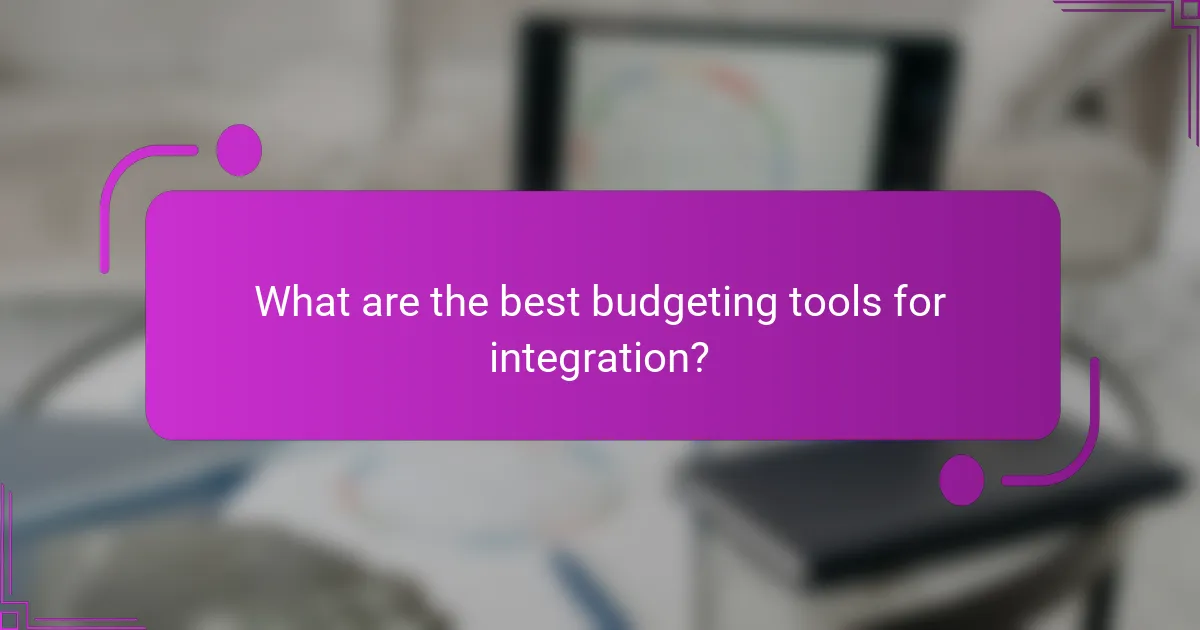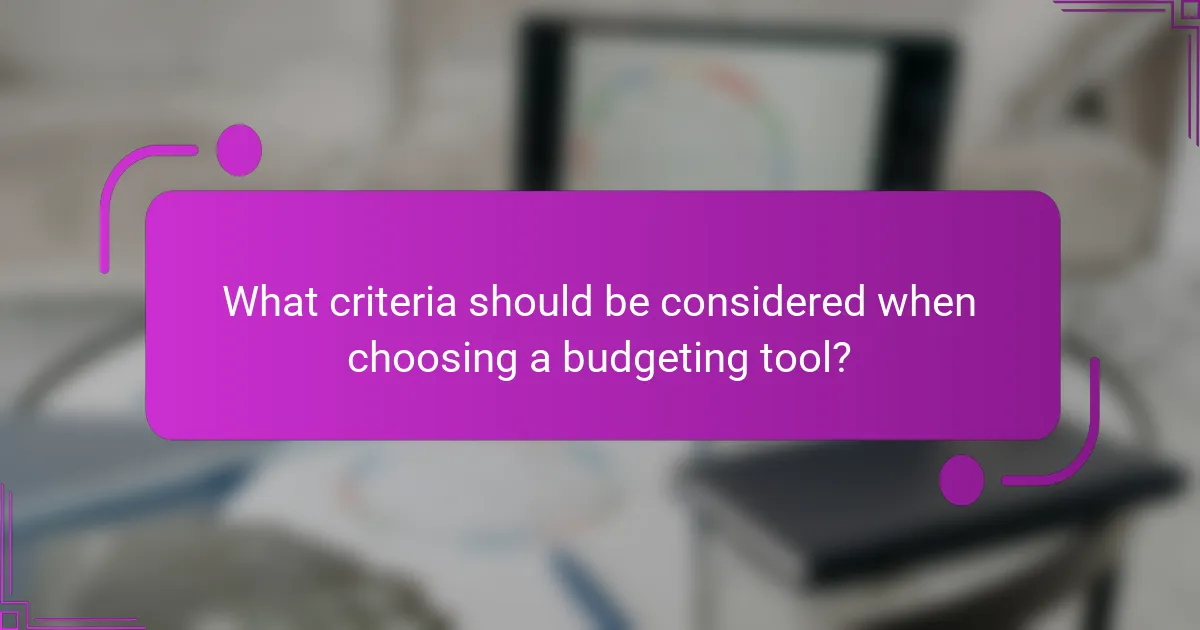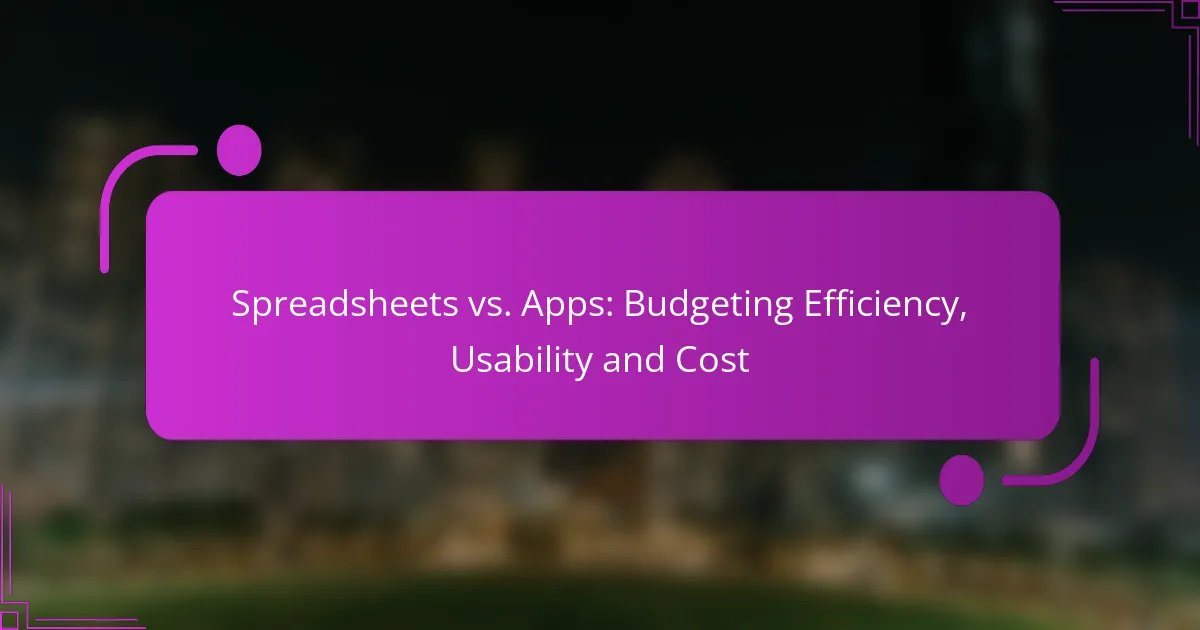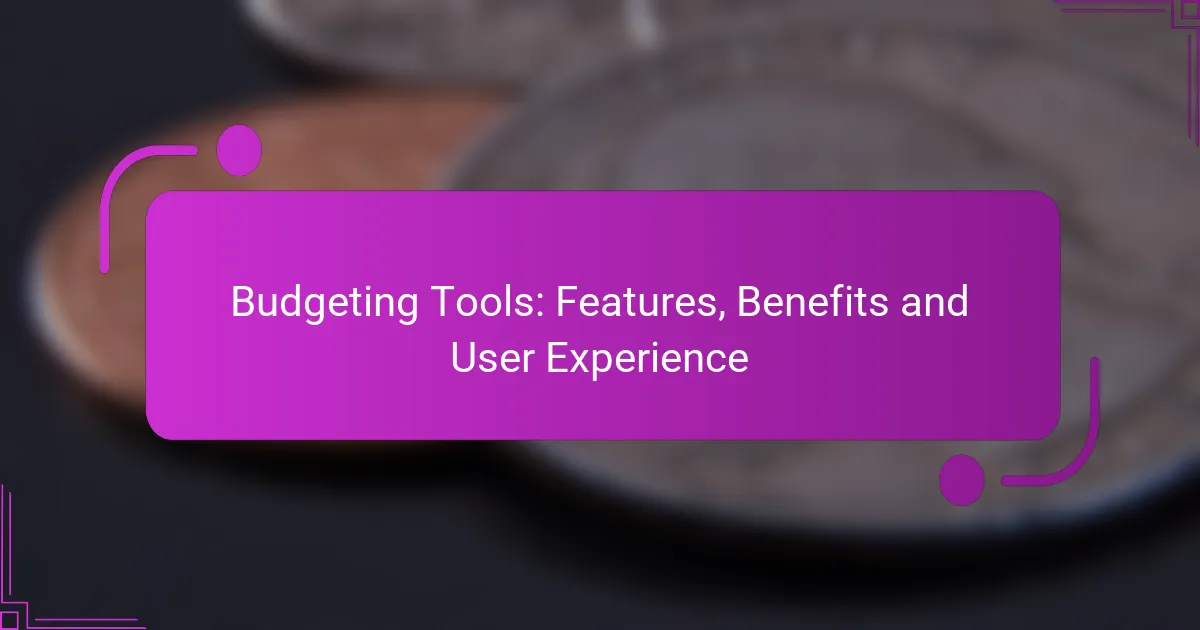Integrating budgeting tools with financial platforms enhances the efficiency of financial management by consolidating data from multiple sources into a single, accessible location. Popular tools like Mint, YNAB, and QuickBooks offer unique features that streamline budgeting processes and improve accuracy. By leveraging these integrations, users can gain real-time visibility into their finances, leading to better decision-making and overall financial health.

What are the best budgeting tools for integration?
The best budgeting tools for integration streamline financial management by connecting various accounts and providing a comprehensive view of your finances. Popular options include Mint, YNAB, QuickBooks, Personal Capital, and EveryDollar, each offering unique features and benefits to help users manage their budgets effectively.
Mint
Mint is a widely used budgeting tool that aggregates all your financial accounts in one place. It allows users to track spending, create budgets, and set financial goals, all while providing insights into spending habits.
One of Mint’s key features is its ability to categorize transactions automatically, making it easier to see where your money goes. Users can also set up alerts for bill payments and budget limits, helping to avoid overspending.
YNAB (You Need A Budget)
YNAB is designed around the principle of proactive budgeting, encouraging users to allocate every dollar they earn to specific expenses or savings goals. This method helps users prioritize their spending and build better financial habits.
With YNAB, users can sync their bank accounts for real-time updates and track their progress towards financial goals. The platform also offers educational resources to help users understand budgeting concepts and improve their financial literacy.
QuickBooks
QuickBooks is primarily known as accounting software, but it also offers budgeting features that can be beneficial for small businesses and freelancers. It allows users to create budgets based on historical data and project future income and expenses.
QuickBooks integrates seamlessly with various financial accounts, providing a comprehensive overview of business finances. Users can generate reports to analyze spending patterns and adjust budgets accordingly, making it a powerful tool for financial planning.
Personal Capital
Personal Capital focuses on wealth management and investment tracking, in addition to budgeting. It provides users with tools to monitor their net worth, track investments, and plan for retirement while managing day-to-day expenses.
This tool offers a holistic view of finances by integrating budgeting and investment tracking, allowing users to see how their spending affects their long-term financial goals. Personal Capital’s dashboard is user-friendly and visually appealing, making it easy to navigate.
EveryDollar
EveryDollar is a straightforward budgeting tool that follows the zero-based budgeting method, where every dollar is assigned a job. This approach helps users ensure that their income covers all expenses and savings goals.
EveryDollar allows users to create customizable budgets and track spending against those budgets. The app offers both free and paid versions, with the paid version providing bank syncing for easier tracking. Users should be mindful of regularly updating their budgets to reflect changes in income or expenses.

How do budgeting tools integrate with financial platforms?
Budgeting tools integrate with financial platforms primarily through technology that allows seamless data exchange. This integration enables users to track their finances more efficiently by consolidating information from various sources into one accessible location.
API connections
API connections are crucial for integrating budgeting tools with financial platforms. They allow different software applications to communicate with each other, facilitating data transfer and synchronization. For instance, a budgeting app can use APIs to pull transaction data from a bank’s system, updating the user’s budget in real-time.
When selecting budgeting tools, consider the API capabilities of each platform. Look for tools that offer robust API support, as this can enhance functionality and ensure compatibility with your existing financial services.
Bank synchronization
Bank synchronization allows budgeting tools to automatically import transactions from bank accounts, providing a comprehensive view of spending. This process typically involves linking your bank account to the budgeting tool, which securely retrieves transaction data at regular intervals.
To ensure successful bank synchronization, verify that the budgeting tool supports your bank and check for any fees associated with this feature. Regular updates can help maintain accuracy, so choose a tool that offers frequent synchronization options.
Third-party integrations
Third-party integrations expand the functionality of budgeting tools by connecting them with other financial applications, such as investment trackers or expense management software. These integrations can streamline financial management by providing a more holistic view of your finances.
When evaluating budgeting tools, consider the range of third-party integrations available. Tools that connect with popular platforms like PayPal, Venmo, or accounting software can enhance your budgeting experience and simplify financial tracking.

What are the benefits of using integrated budgeting tools?
Integrated budgeting tools offer numerous advantages, including streamlined financial management, enhanced accuracy, and better collaboration among team members. These tools help users maintain real-time visibility into their finances, leading to informed decision-making and improved financial health.
Real-time tracking
Real-time tracking allows users to monitor their financial activities as they occur, providing immediate insights into spending patterns and budget adherence. This feature helps identify discrepancies quickly, enabling timely adjustments to avoid overspending.
For instance, a small business can use integrated budgeting tools to track expenses daily, ensuring they stay within their budget limits. This proactive approach can prevent financial surprises at the end of the month.
Improved financial insights
Integrated budgeting tools enhance financial insights by consolidating data from various sources, allowing for comprehensive analysis. Users can generate reports that highlight trends, forecast future expenses, and identify areas for cost reduction.
For example, a household might analyze their monthly spending patterns to discover that dining out consumes a significant portion of their budget. With this insight, they can make informed choices about reducing discretionary spending.
Time savings
Using integrated budgeting tools can save considerable time by automating data entry and calculations. This efficiency reduces the manual effort required to track finances, allowing users to focus on strategic planning rather than administrative tasks.
For instance, a finance team can automate monthly reports, cutting down the time spent on compiling data from hours to just a few minutes. This time savings can be redirected towards more valuable activities, such as financial analysis or strategic initiatives.
Enhanced collaboration
Integrated budgeting tools facilitate enhanced collaboration by allowing multiple users to access and update financial data simultaneously. This feature ensures that all team members are on the same page, reducing the risk of miscommunication and errors.
For example, in a project-based environment, team members can update their budgets in real-time, enabling quick adjustments based on project developments. This collaborative approach fosters accountability and encourages proactive financial management across the organization.

What results can be expected from budgeting tool integration?
Integrating budgeting tools can lead to significant improvements in financial management, including increased savings, better expense tracking, and enhanced financial literacy. These outcomes stem from streamlined processes and better visibility into spending habits.
Increased savings
One of the primary benefits of budgeting tool integration is the potential for increased savings. By automating savings goals and tracking progress, users can more easily set aside funds for emergencies or future investments.
For example, a budgeting tool can suggest a savings percentage based on income and expenses, helping users allocate funds more effectively. Many people find that they can save an additional 10-20% of their income when they actively monitor their spending through these tools.
Better expense management
Budgeting tools enhance expense management by providing clear insights into spending patterns. Users can categorize expenses, set limits, and receive alerts when they approach those limits, making it easier to stay within budget.
For instance, a user might notice they are overspending on dining out and can adjust their budget accordingly. This proactive approach can lead to a reduction in unnecessary expenses, often resulting in savings of several hundred dollars each month.
Higher financial literacy
Integrating budgeting tools can significantly boost financial literacy by educating users about their financial habits. Many tools offer resources and tips on budgeting, saving, and investing, which can empower users to make informed decisions.
As users engage with these tools, they often learn to interpret financial data, understand credit scores, and grasp the importance of long-term financial planning. This knowledge can lead to better financial choices and a more secure financial future.

What criteria should be considered when choosing a budgeting tool?
When selecting a budgeting tool, consider factors such as ease of use, integration capabilities, features, and cost. These criteria will help ensure that the tool meets your financial management needs effectively.
User experience
User experience is crucial when choosing a budgeting tool, as it directly impacts how easily you can manage your finances. Look for tools with intuitive interfaces that allow for quick navigation and straightforward functionality.
Consider features like customizable dashboards, mobile accessibility, and visual representations of your budget. A good user experience can save you time and reduce frustration, making it easier to stick to your budgeting goals.
Read user reviews and try out demos to gauge how well a tool meets your expectations. Prioritize tools that offer a seamless experience across devices, ensuring you can manage your budget anytime, anywhere.


